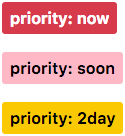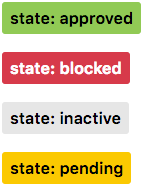Conventional Commit which is a great practice among engineering teams. Conventional Commit is a formatting convention that provides a set of rules to formulate a consistent commit message structure like so:
<type>[optional scope]: <description>
[optional body]
[optional footer(s)]
The commit type can include the following:
- feat – a new feature is introduced with the changes
- fix – a bug fix has occurred
- chore – changes that do not relate to a fix or feature and don't modify src or test files (for example updating dependencies)
- refactor – refactored code that neither fixes a bug nor adds a feature
- docs – updates to documentation such as a the README or other markdown files
- style – changes that do not affect the meaning of the code, likely related to code formatting such as white-space, missing semi-colons, and so on.
- test – including new or correcting previous tests
- perf – performance improvements
- ci – continuous integration related
- build – changes that affect the build system or external dependencies
- revert – reverts a previous commit
The commit type subject line should be all lowercase with a character limit to encourage succinct descriptions.
The optional commit body should be used to provide further detail that cannot fit within the character limitations of the subject line description.It is also a good location to utilize BREAKING CHANGE: to note the reason for a breaking change within the commit.
The footer is also optional. We use the footer to link the issue that would be closed with these changes for example: Closes #2.
fix: fix foo to enable bar
This fixes the broken behavior of the component by doing xyz.
BREAKING CHANGE
Before this fix foo wasn't enabled at all, behavior changes from <old> to <new>
Closes #4
- Good
chore: update npm dependency to latest version
Fix bug preventing users from submitting the subscribe form
Update incorrect client phone number within footer body per client request
- Bad
fixed bug on landing page <br>
Changed style <br>
oops<br>
I think I fixed it this time?<br>
empty commit messages
- Include the purpose of this Pull Request.
- Consider providing an overview of why the work is taking place (with any relevant links)
- Remember that anyone in the repo could be reading this Pull Request, so the content and tone may inform people other than those taking part, now or later.
- Be explicit about when you want feedback, if the Pull Request is work in progress, say so. A prefix of “[WIP]” in the title is a simple, common pattern to indicate that state.
- Be as graphical as possible use screenshots
- Review your own PR before you assign it to others




